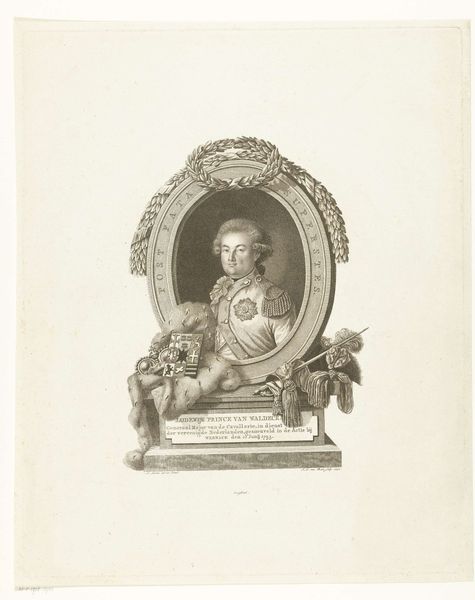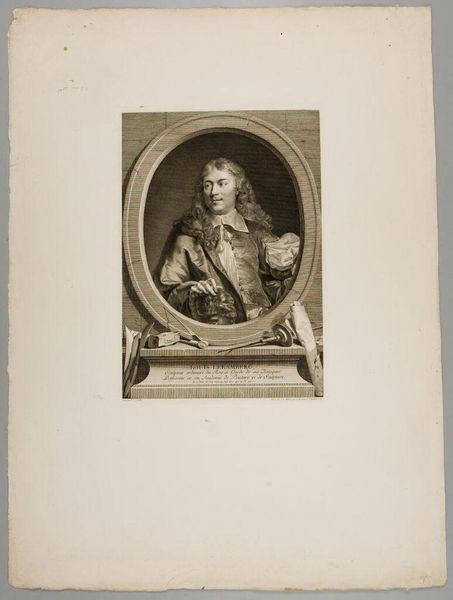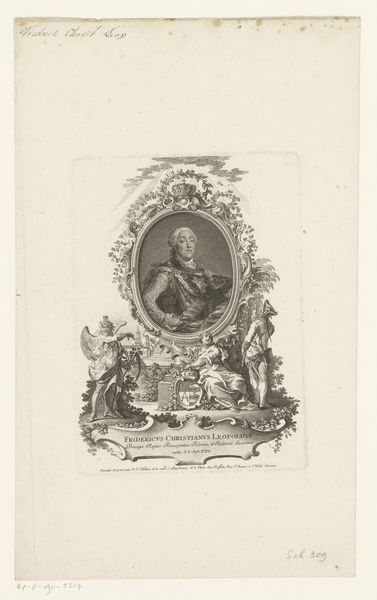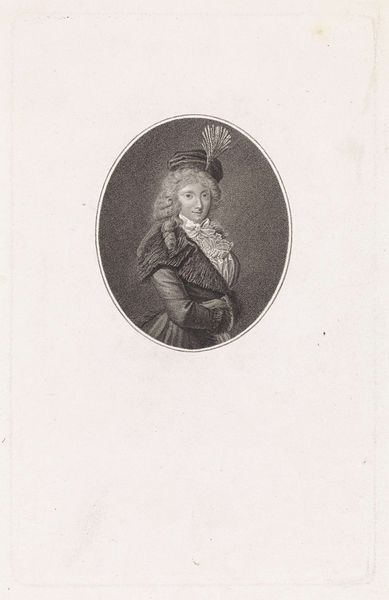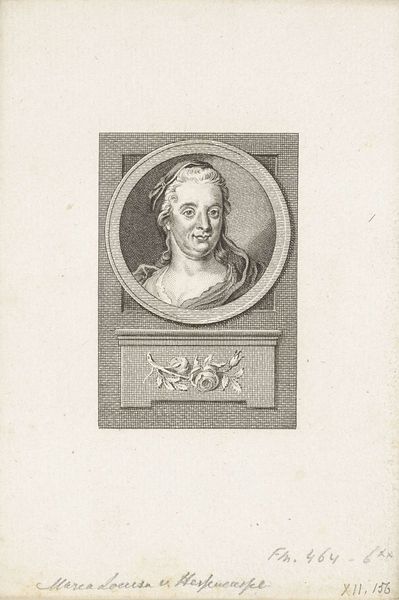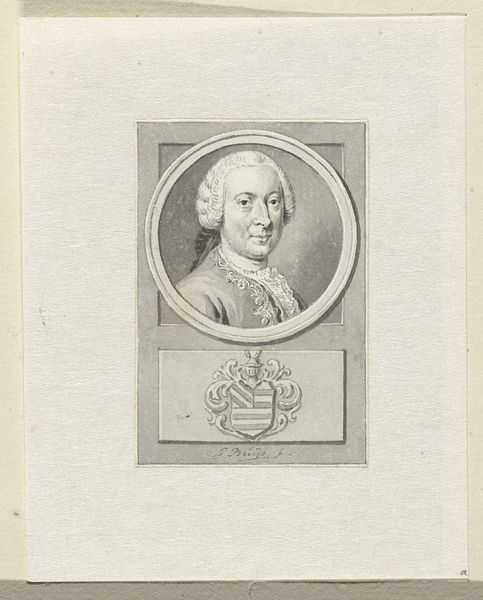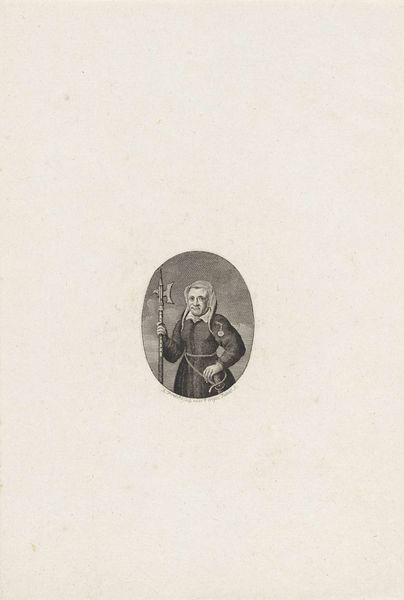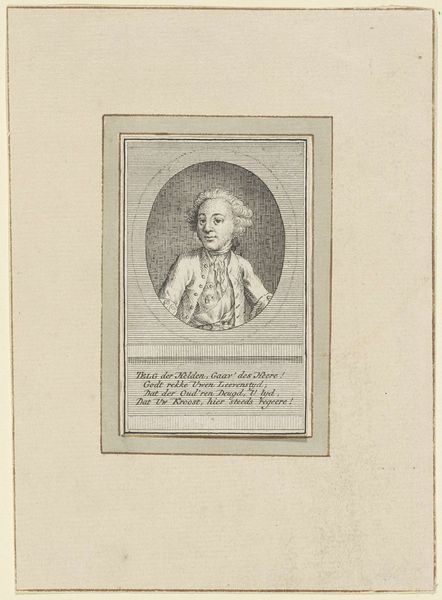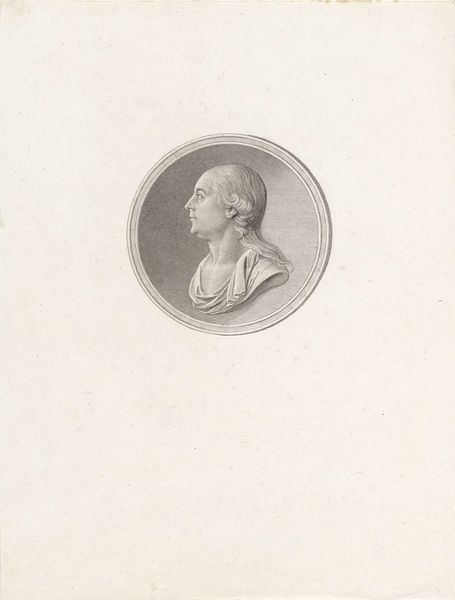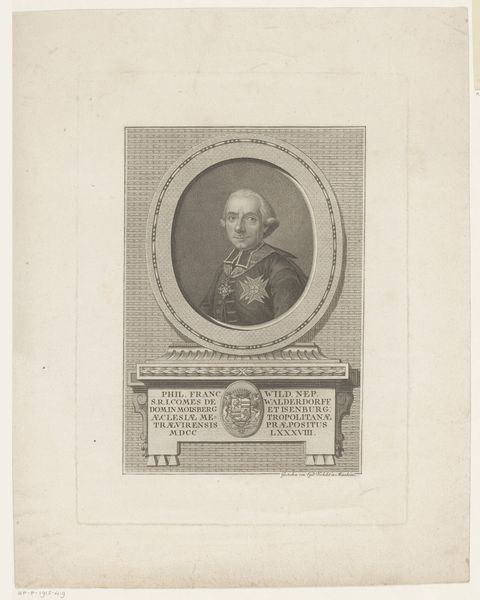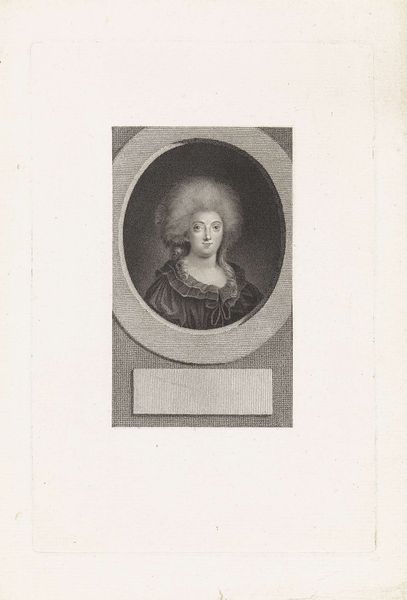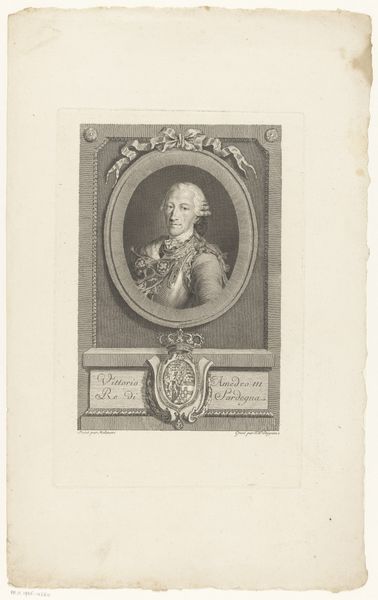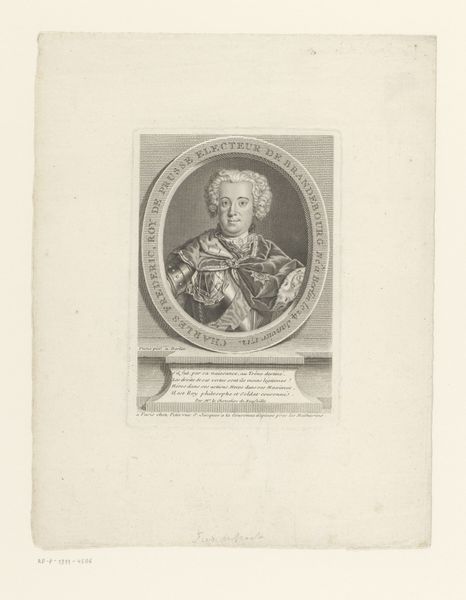
print, engraving
#
portrait
#
pencil drawn
#
neoclacissism
# print
#
pencil sketch
#
old engraving style
#
line
#
history-painting
#
engraving
Dimensions: height 219 mm, width 135 mm
Copyright: Rijks Museum: Open Domain
Curator: This is a print entitled "Portret van koning Lodewijk XVI van Frankrijk," dating from 1793 to 1813, by Jacob Willem Strunck. Editor: It feels stark. A sort of somber monumentality despite its likely small size. There is very limited detail, which contributes to a feeling of detachment. Curator: Indeed. This engraving, made posthumously, employs a Neoclassical style. The printmaking technique involves meticulously incising lines onto a metal plate to hold ink. Notice the stark contrasts in the light values—achieved by controlling the depth and density of those engraved lines. Editor: What fascinates me is the print's probable function. As a readily reproducible image, this could have been circulated quite widely during and after the Revolution, serving various political agendas by manipulating public perception of the fallen monarch. Think of the markets that sold prints, and how those images could create meaning outside of the main political power structures. Curator: And the physical nature of engraving itself! Think of the engraver's labour; it's a meticulous, demanding process— a commercial one too, that connects artistic production directly to craft and to a marketplace of readily reproducible imagery. Also notice that the image has a history painting on its pedestal. What significance do you find? Editor: It grounds Louis XVI in his historical demise. The inclusion acts almost as an indictment. Consider how this imagery interacted with other depictions, texts, and public sentiments of the time. Curator: It underscores the tragedy inherent in its creation. Made after the execution, its very existence depends on the act of extreme political violence and its cultural legacy. It transforms grief, political messaging, and popular remembrance. Editor: The materials themselves carry meaning. This print served as a conduit for information and political discourse, reflecting broader socio-political transformations during that time. Curator: A potent reminder that even in its subdued tones and simple materials, this artwork conveys considerable artistic and historical weight. Editor: Absolutely. Its power resides not only in the image but also in its accessibility and the way it entered public consciousness.
Comments
No comments
Be the first to comment and join the conversation on the ultimate creative platform.
